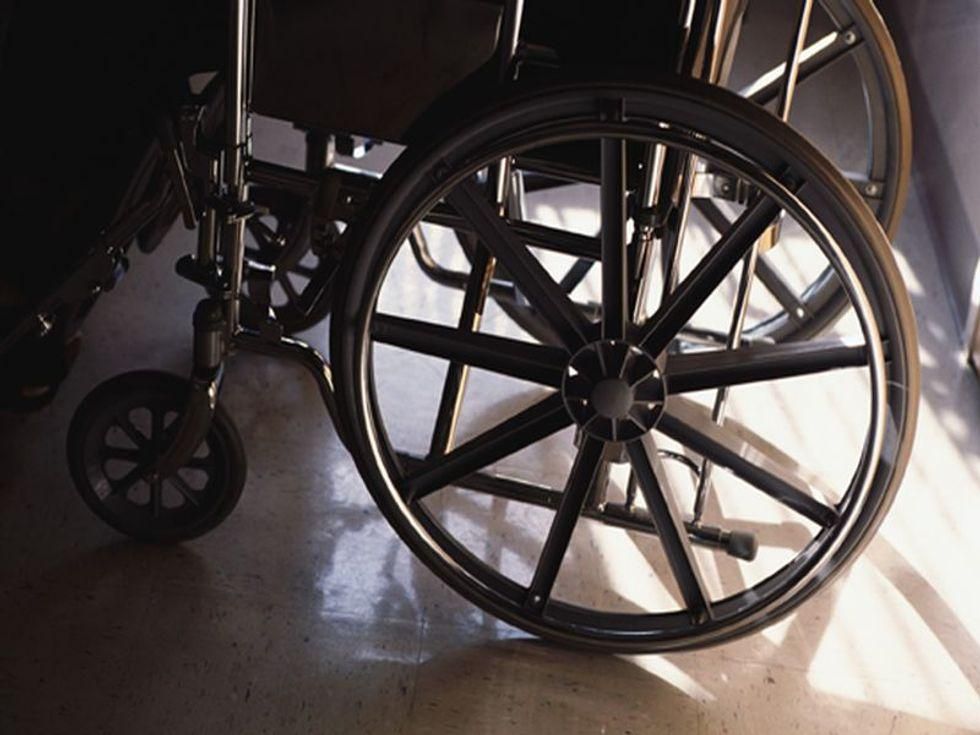WEDNESDAY, May 26, 2021 (HealthDay News) — People with spinal cord injuries can overwork their shoulders as they move about in a wheelchair, and that often leads to chronic shoulder pain.
However, a small study suggests that an injection of the patient’s own fat cells can help ease the pain.
The injected cells cushion the joint and may repair it, the researchers explained. Most important, they said that the procedure — called micro-fragmented adipose tissue (MFAT) injection — relieves pain and improves quality of life.
“It’s not like a steroid injection — really, what we’re trying to do is kind of reinitiate the whole healing response,” said lead author Dr. Trevor Dyson-Hudson, director of the Center for Spinal Cord Injury Research at the Kessler Foundation in West Orange, N.J.
People who use wheelchairs often injure their shoulders, the joint most stressed as they move and lift themselves into and out of bed and cars.
People try all sorts of pain remedies, but none provides a long-lasting solution. That’s why this procedure is so promising, Dyson-Hudson said. Most patients in this small study have been pain-free for more than two years.
Dyson-Hudson noted that this procedure is not only for those in wheelchairs, but for anyone with severe joint pain. It’s being used to treat knees, too, he said.
The downside is that the procedure is considered experimental, so it’s not covered by health insurance. But it is an option for someone who is not getting pain relief from other methods, Dyson-Hudson said.
“This could be a viable option, rather than going straight to surgery to address the pain,” he said.
For this pilot study, his team used the procedure on 10 patients with spinal cord injuries. All 10 use wheelchairs and had damaged rotator cuffs from overuse of the shoulder joint. All were in unrelenting pain.
While many nonsurgical therapies for shoulder pain exist — including pain medication, physical therapy and equipment modifications — none of these provide long-term pain relief.
After the ultrasound-guided fat injections, however, nearly 80% of patients had a significant decrease in pain. All but one had improvement in pain and function.
Joseph Monteforte, 58, of Fort Myers, Fla., suffered a spinal injury in a 2007 building collapse. In spite of it, he remained active but developed severe shoulder pain.
“For years, I was getting cortisone and nerve block shots every three months,” he said.
Monteforte has been free of pain for almost four years after having MFAT as part of this trial. He called it a “priceless procedure.”
“I’ll use the word priceless, because I had my left shoulder operated on when I was an able-bodied person in 2005,” he said. “I had shoulder surgery for rotator cuff repairs and other work and it literally took months to get back on my feet.”
After the MFAT procedure on his right shoulder, Monteforte felt immediate relief.
“Your quality of life goes from being minimal to 100% improvement,” he said.
That’s critical for someone who uses a wheelchair, he added.
“As wheelchair users, no matter what your condition, you cannot afford to go under the knife, or you’re going to end up being in a nursing home, or have a 24-hour-a-day caregiver, because when you have surgery, you’re laid up, you can’t use that arm,” Monteforte said. Of MFAT he said, “They’re doing a procedure where they’re not cutting anything.”
Monteforte is such a believer that he intends to get the injection on his left shoulder now. He’s even going to pay the $4,000 cost out of his own pocket.
Dyson-Hudson’s team now plans larger trials.
Dr. Yili Huang, director of the pain management center at Northwell Phelps Hospital in Sleepy Hollow, N.Y., reviewed the findings.
“Some studies have suggested that as many as 73% of spinal cord injury patients struggle with shoulder pain, but it is important to remember that shoulder pain is a symptom and not a diagnosis, and can be caused by injuries beyond the shoulder, such as the neck,” he said.
Problems with the neck can be the cause of between 13% and 33% of shoulder pain in patients with spinal cord injury, Huang added.
“Nonsurgical treatments for shoulder pain can indeed be challenging,” he said. “Other treatments may include steroid injections, which can be effective, but more for short- to intermediate-term relief and often lack long-term durability.”
The durability of the pain and function improvement is what is truly special in this study, Huang said.
“Very few nonoperative treatments for advanced rotator cuff disease last this long. This is especially important, because shoulder pain that limits the use of the arms is especially debilitating for someone with spinal cord injury,” he said. “But as encouraging as the treatment may be, it is important to be able to study its effectiveness in a larger and more diverse patient population.”
The findings were recently published online in the Journal of Spinal Cord Medicine.
More information
For more on shoulder pain, visit the American Academy of Orthopaedic Surgeons.
SOURCES: Trevor Dyson-Hudson, MD, director, Center for Spinal Cord Injury Research, Kessler Foundation, West Orange, N.J.; Joseph Monteforte, patient/study participant, Fort Myers, Fla.; Yili Huang, DO, director, pain management center, Northwell Phelps Hospital, Sleepy Hollow, N.Y.; Journal of Spinal Cord Medicine, April 8, 2021, online
Copyright © 2025 HealthDay. All rights reserved.

